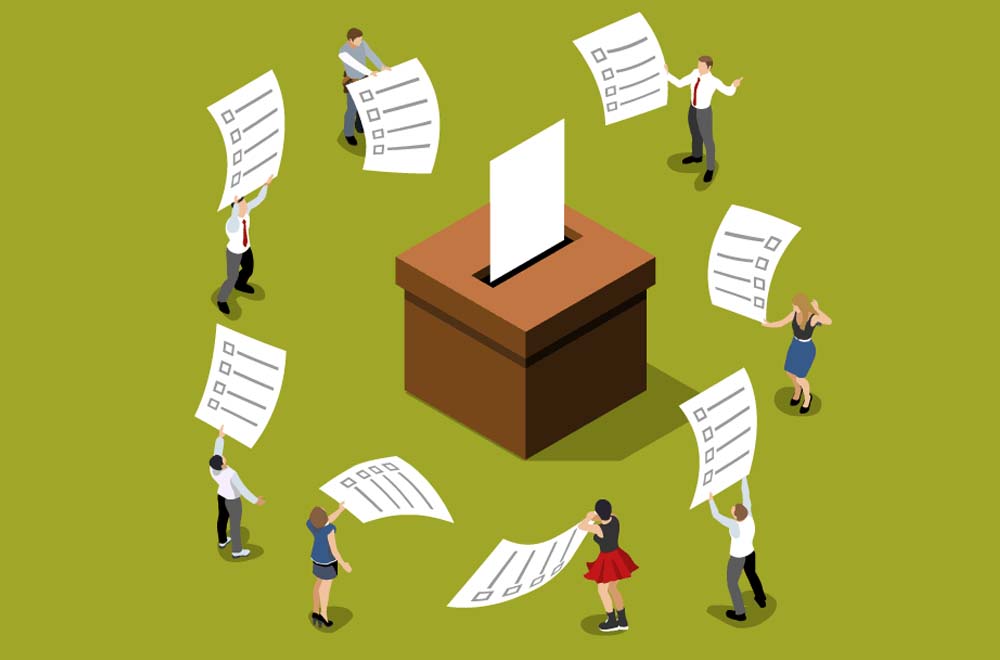Disclaimer: The Eqbal Ahmad Centre for Public Education (EACPE) encourages critical and independent thinking and believes in a free expression of one’s opinion. However, the views expressed in contributed articles are solely those of their respective authors and do not necessarily reflect the position or policy of the EACPE.
The halo effect of being in the lead is undeniable, however, there are times when being a front runner becomes a liability. As unintuitive as it may sound, but there are circumstances when the odds favour those who are in the chase. Typically, this phenomenon is witnessed during hotly contested elections which are regarded as too close to call by the pundits. Under these conditions, there is a veiled advantage that favour the underdogs which often results in them becoming victorious. In recent years, Hillary Clinton found this out the hard way during the 2016 US presidential elections, whereas, Brexiteers in the UK were able to pull a surprise win despite trailing in the surveys. Even in the recent US presidential poll, Donald Trump despite losing the elections performed much better than anticipated.
Although the divergence between forecasted versus actual results is difficult to fully explain, however, I believe a factor called voter apathy does provide some useful insights. Voter apathy can be described as a measure of an individual’s degree of indifference to voting. Interestingly, research indicates that in comparison to trailing candidates, the lead contender faces more difficulty to motivate their followers to vote. Broadly speaking, this occurs because the supporters of front runners are prone to complacency requiring a higher impetus to participate. Therefore, since an underdog possesses a more active voter base, their chance of winning is enhanced especially in a nail-biting contest.
A trailing candidate is often able to defy the odds to achieve election victory.
As a rule, voter apathy is highest when individuals believe that their ballot has little chance to alter the overall outcome. Therefore, polling exercises within smaller groups generate more energetic participation when compared with large clusters. To see why this is the case, consider a scenario in which you along with two other individuals decide to use elections to choose from one of the two options A or B. In this situation, your vote is deemed important if it influences the determination of the overall outcome. For example, if one individual selects A and the other opts for B, then your pick is directly responsible to break the tie. However, if both the others collectively choose A or B, then your ballot will not determine the result. If we work out the combinations, it is apparent that the odds for your vote to be an influencer is as high as 50%.
However, if we extend the same situation to yourself and four others, then the probability of your option being a tie breaker decreases to approximately 38%. Therefore, this implies that an individual would be more inclined to participate when there are three people as opposed to when there are five. Additionally, as we work this out for much larger populations, we will notice that the probability of an individual vote influencing the outcome becomes miniscule. Hence, we can deduce that the propensity to participate in a poll is inversely related to the number of voters.
Besides the size of the population, there are other factors that influence voter apathy. For instance, one important element is the intensity of ongoing competition between contenders. To appreciate this, consider yourself amongst 100 people wanting to choose one out of the two options namely A or B. Now suppose that you estimate that 10 people including yourself are in favour of option A, whereas 90 others are supporting B. In this situation, it is apparent that you will be less excited to vote since you would believe that your effort is not likely to change the outcome. Interestingly though, supporters of option B will be equally complacent since they would believe that their preferred option will win irrespective of their participation. Hence, what this tells us is that voter apathy is highest during one-sided elections, whereas, close contests would drive most people to participate as their vote is likely to make a difference.
Although voter participation is higher in closely contested elections, the leading candidate is beset with having to deal with followers that are prone to be more complacent. To see why this is so, imagine a neck and neck situation between two candidates with one estimated to be supported by 55 people and the other with 45 voters. It turns out that the set of 55 people are inherently more indifferent than the cluster of 45 individuals due to what is known as diffusion of responsibility. This implies that a person in a smaller group feels more accountable to act than an individual belonging to a larger group where the obligation is deemed to be divided amongst larger pool of people. Therefore, by virtue of commanding a biggest sized cohort, the front runner will always have to put in the extra effort to galvanize their hesitant voters. Interestingly, the diffusion of responsibility phenomenon has also been validated by the researchers in the field of game theory who have formally shown this to be a rational behaviour. Therefore, we can summarise that any leading contender of an election has a support base that is innately more indifferent to voting than those of the opposite camp.
There is a veiled advantage that favour the underdogs which often results in them becoming victorious.
In many instances, the pollsters often proactively ask respondents about their voting intent in terms of their commitment to cast the ballot. It turns out that the response to the intent question does not fully capture voter apathy. As an analogy, imagine if someone were to ask us if we will willingly give up our seat if there was a senior citizen looking for one in a waiting area. Most of us will say yes to that without much thought, however, our behaviour indicates that our propensity to offer our chair is dependent upon how many others are occupying a seat. In other words, we become naturally hesitant and feel less accountable due to the presence of a large group of people whom we regard as equally responsible. Hence, despite of our noble intent, our tendency to act upon our intent depends upon the size of the cohort around us. Therefore, even if the pollsters were to ascertain the intent of voters prior to the elections, it does not fully capture the voter indifference that arises due to diffusion of responsibility.
In a nutshell, voter apathy impacts the overall turnout for various candidates in an election. The emergent voter behaviour which arises due to diffusion of responsibility favours the underdog. Although the trailing candidate commands a smaller group of supporters, yet, they have a higher propensity to cast their ballots. Therefore, during close competitions, higher turnout due to low voter apathy can tilt the balance in the direction of the underdog. This overlooked factor seems to have played a role in the recently held elections in which the struggling contenders were able to achieve better than expected results. Therefore, for those analysts that wish to improve their forecasting of future encounters, it is recommended that they intrinsically build voter apathy as part of their overall predictive modelling.
 Vaqar Khamisani is based in London and works as a Global Director of Insights for a leading information-based analytics company.
Vaqar Khamisani is based in London and works as a Global Director of Insights for a leading information-based analytics company.



 Vaqar Khamisani is based in London and works as a Global Director of Insights for a leading information-based analytics company.
Vaqar Khamisani is based in London and works as a Global Director of Insights for a leading information-based analytics company.



